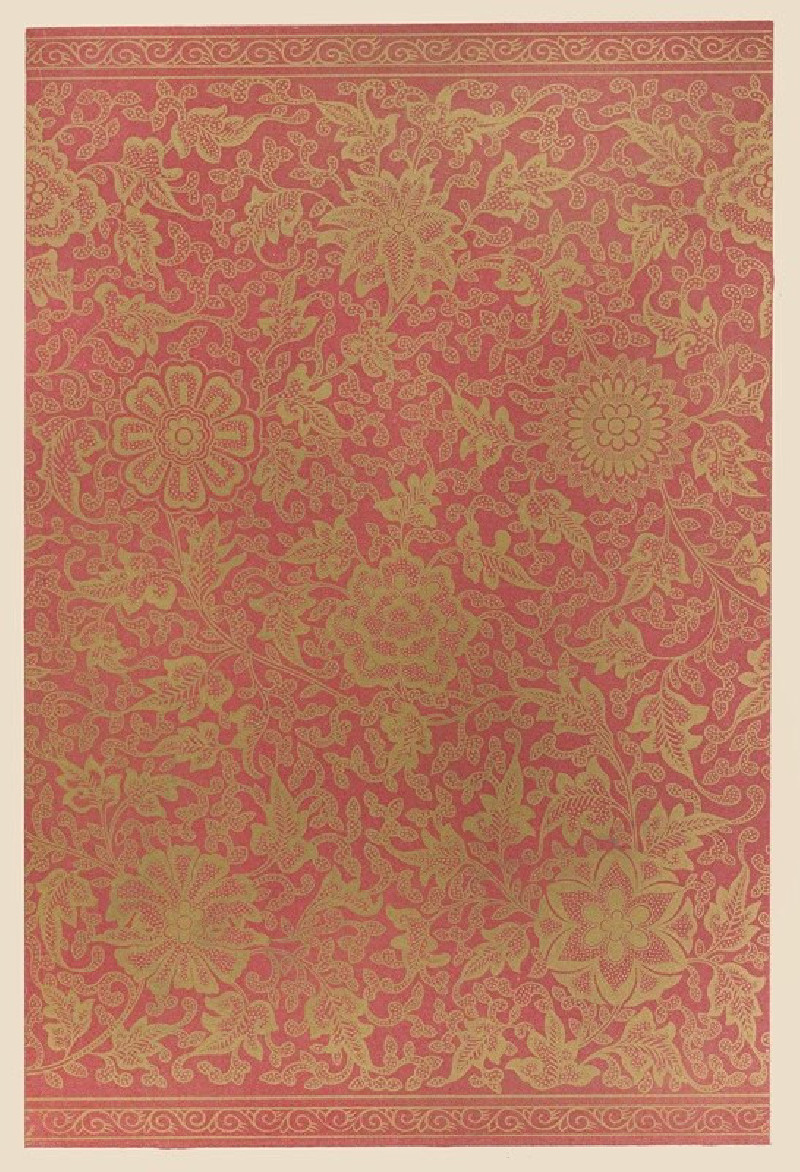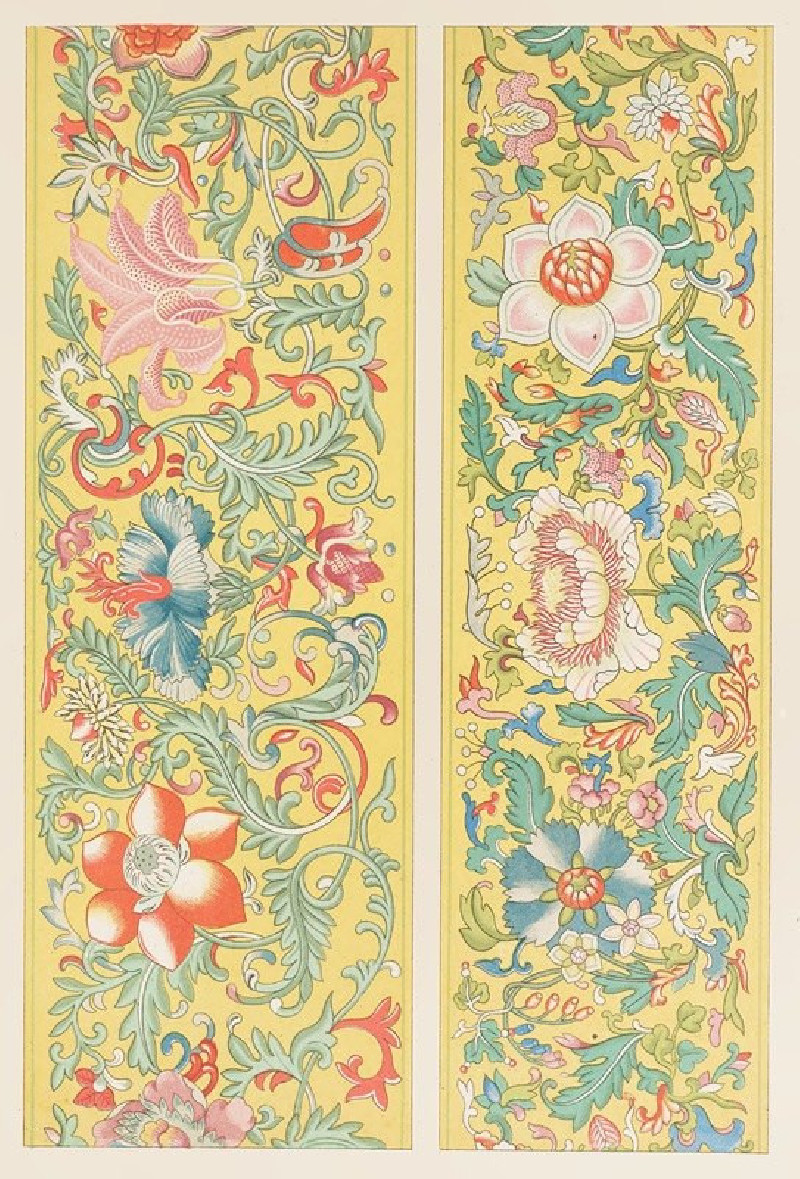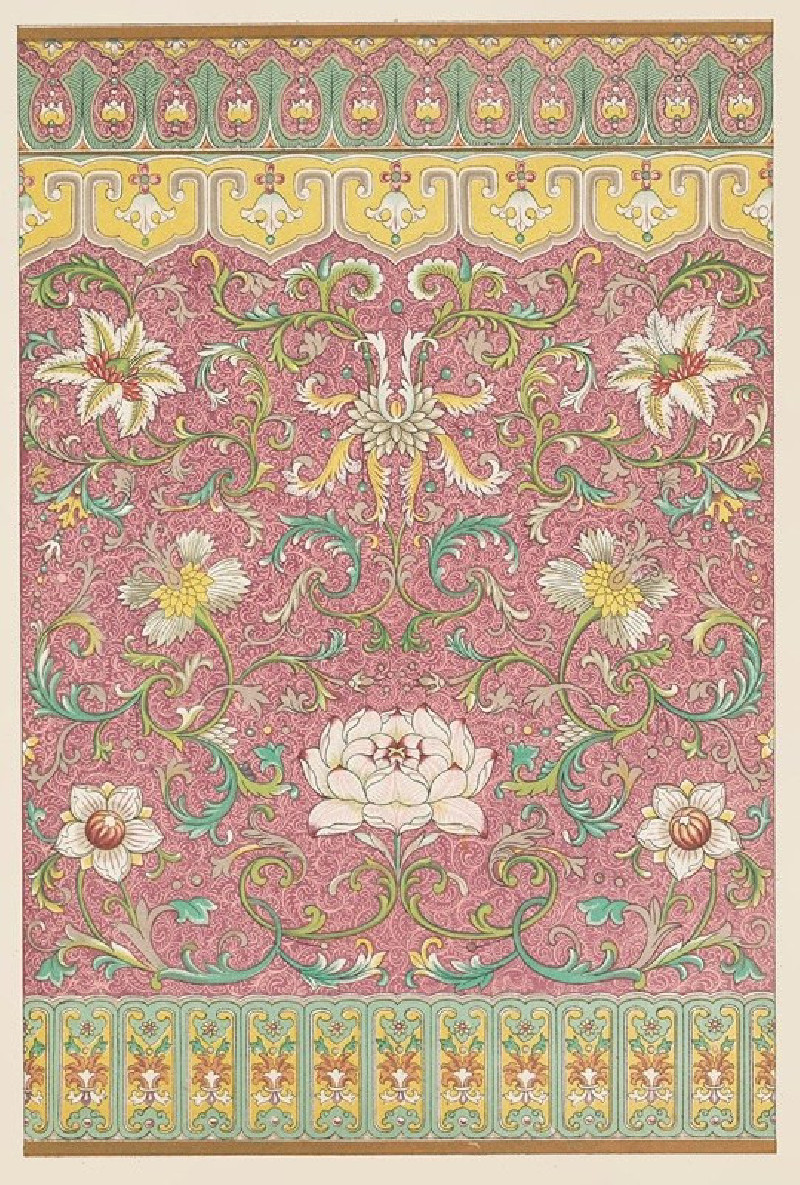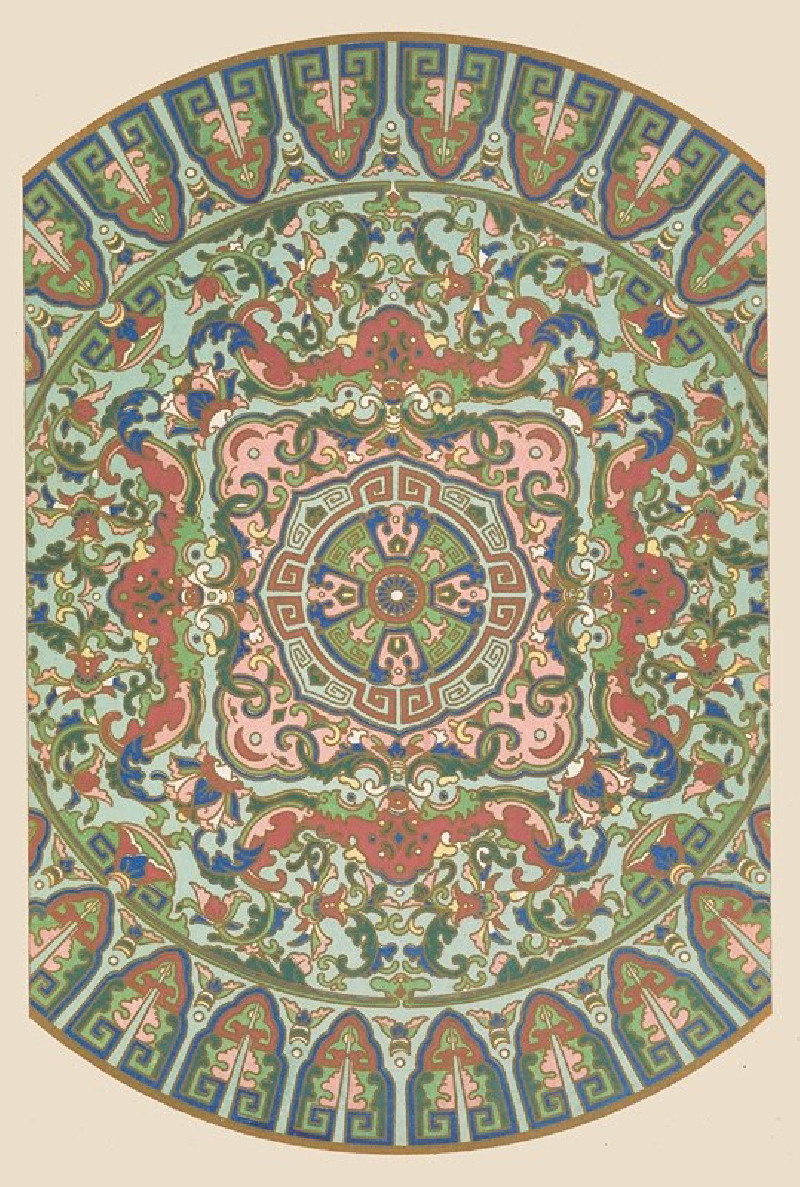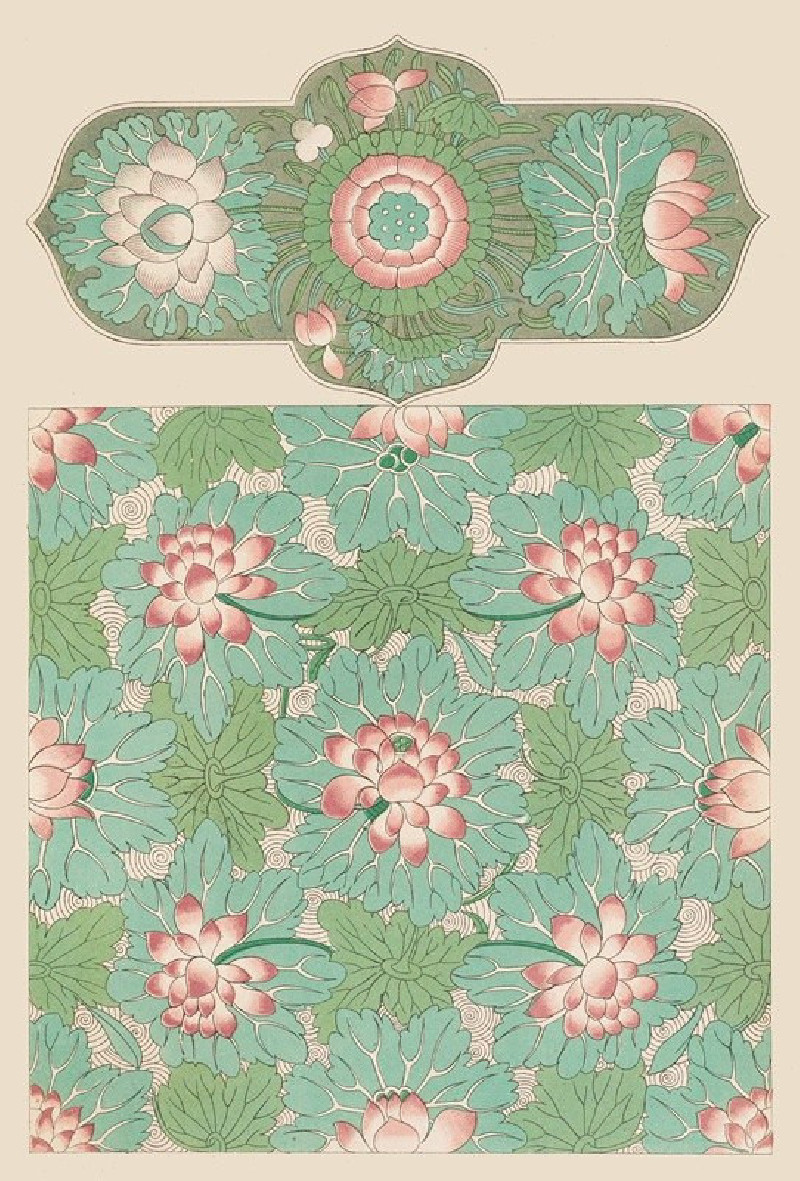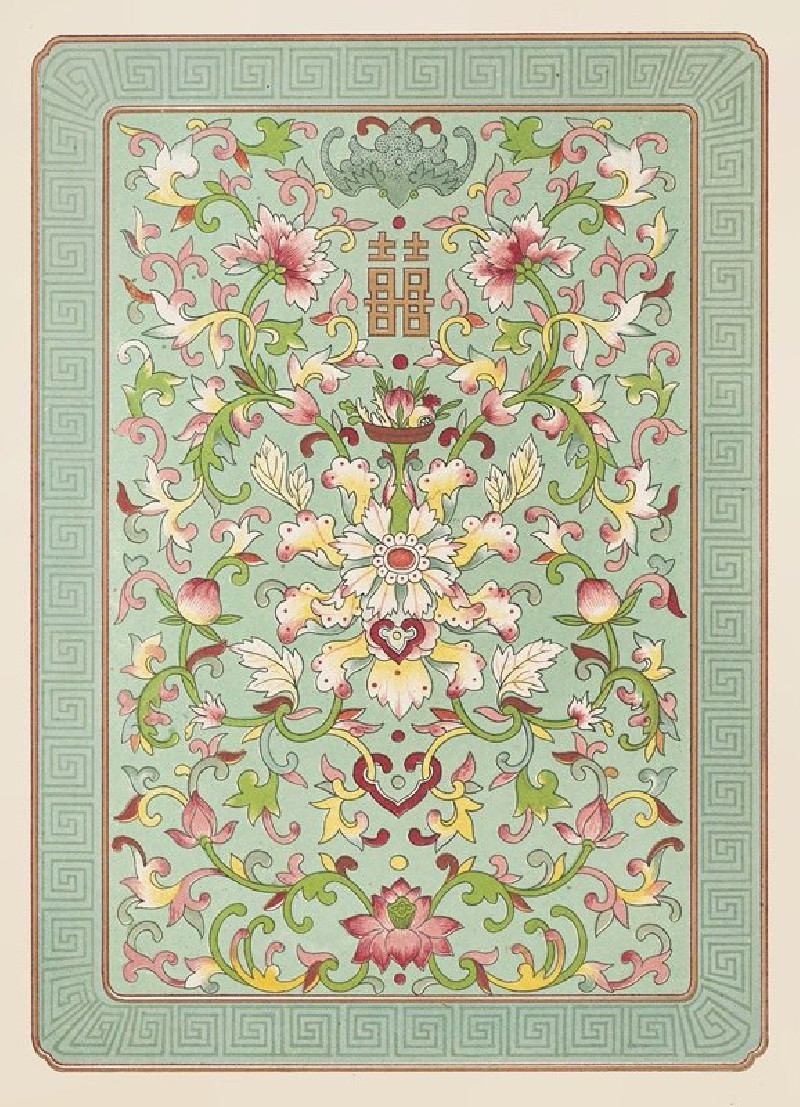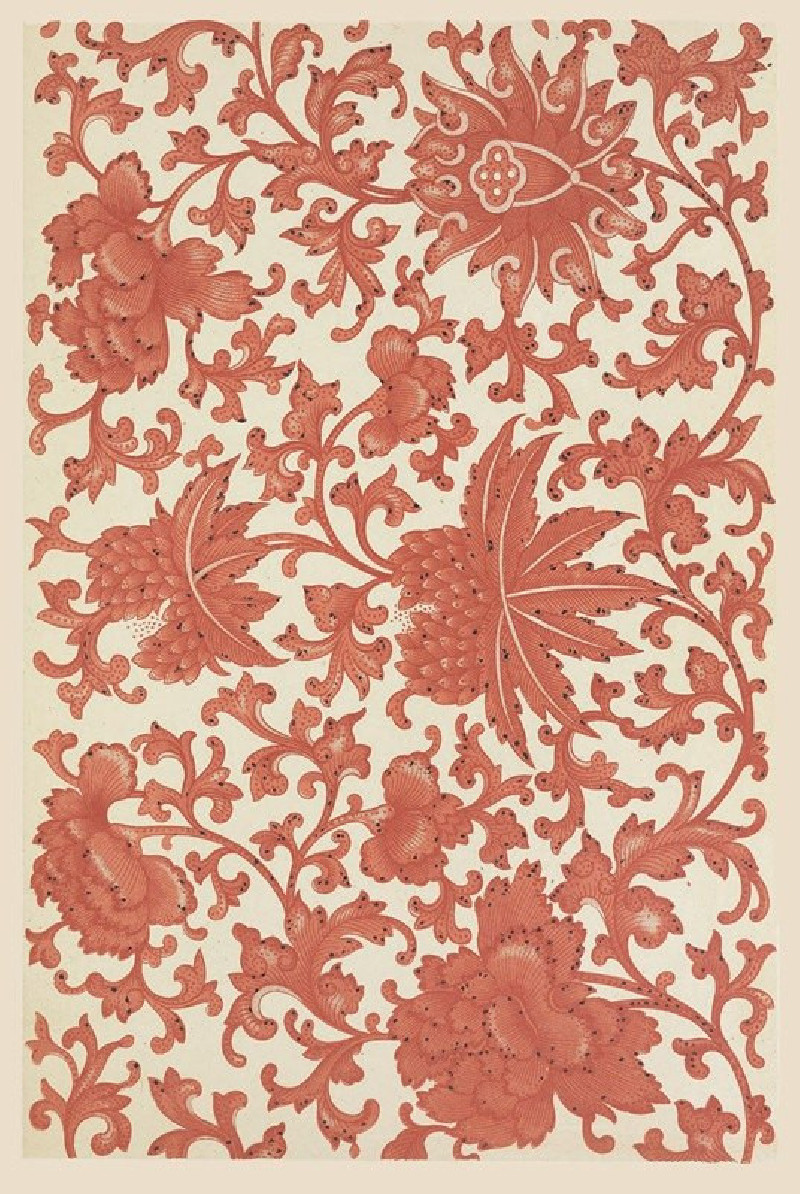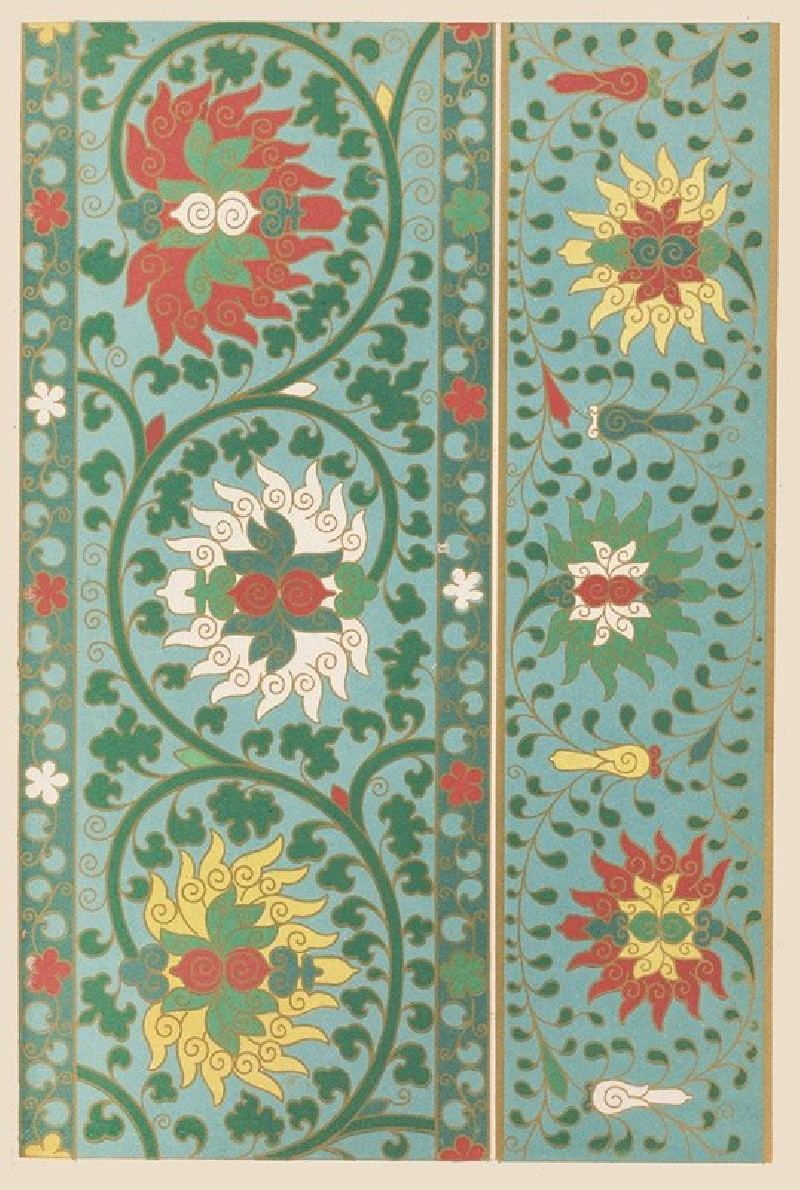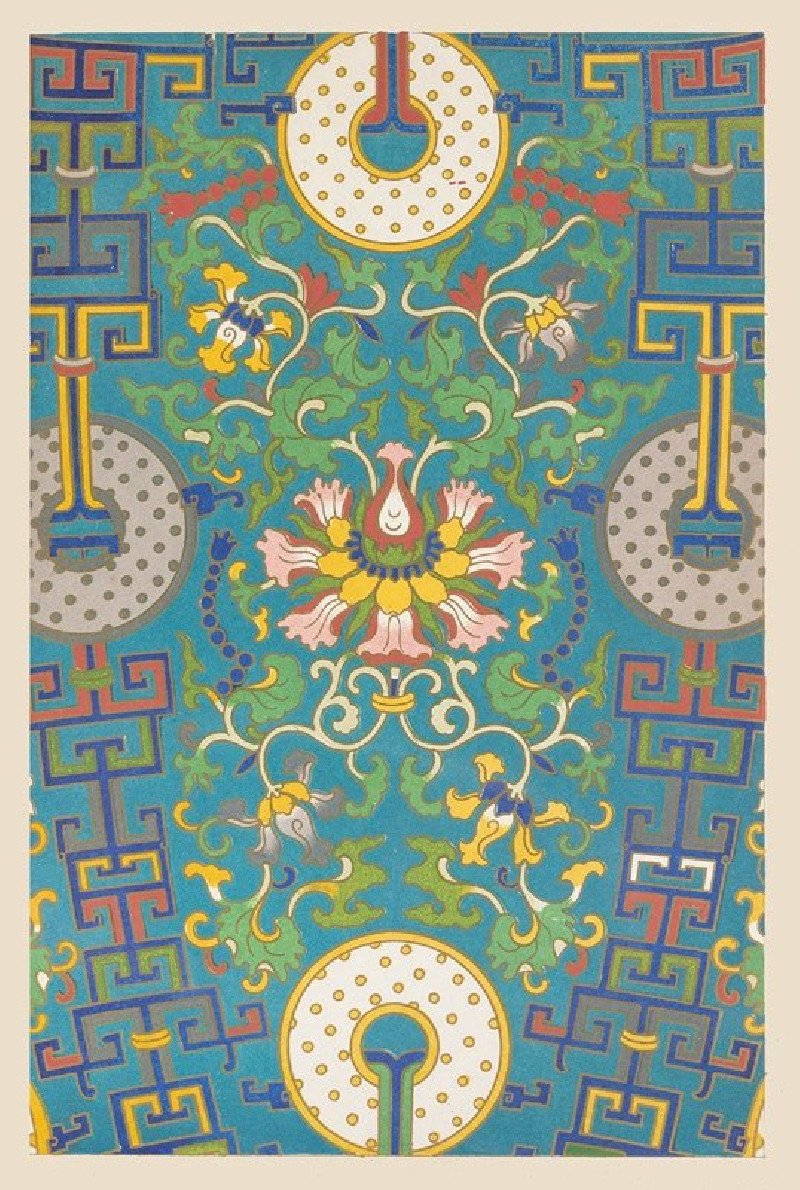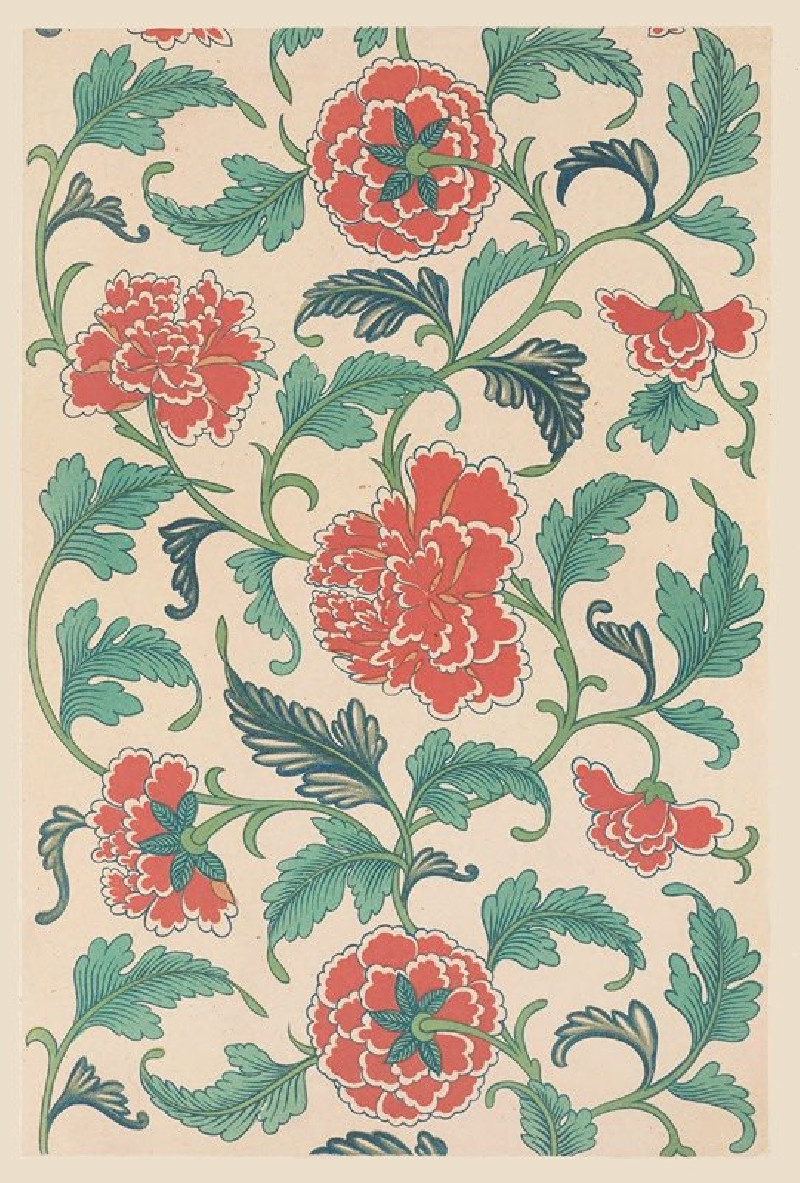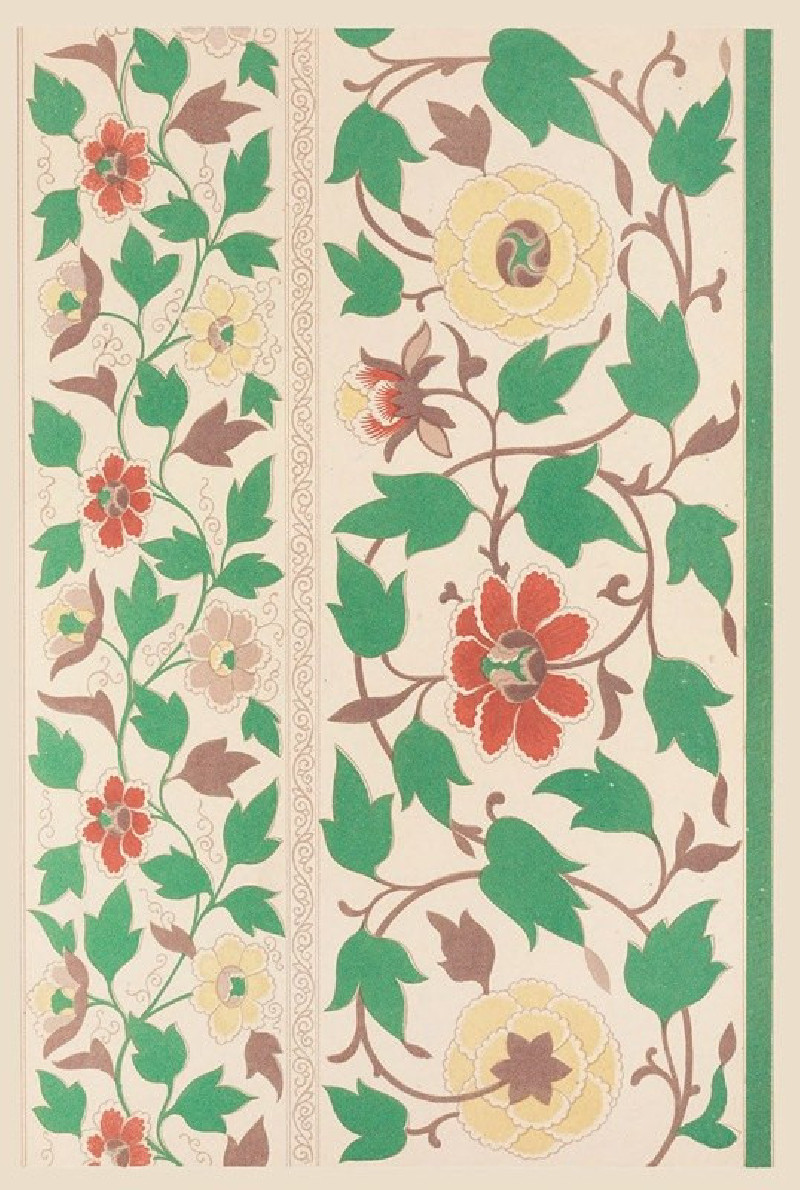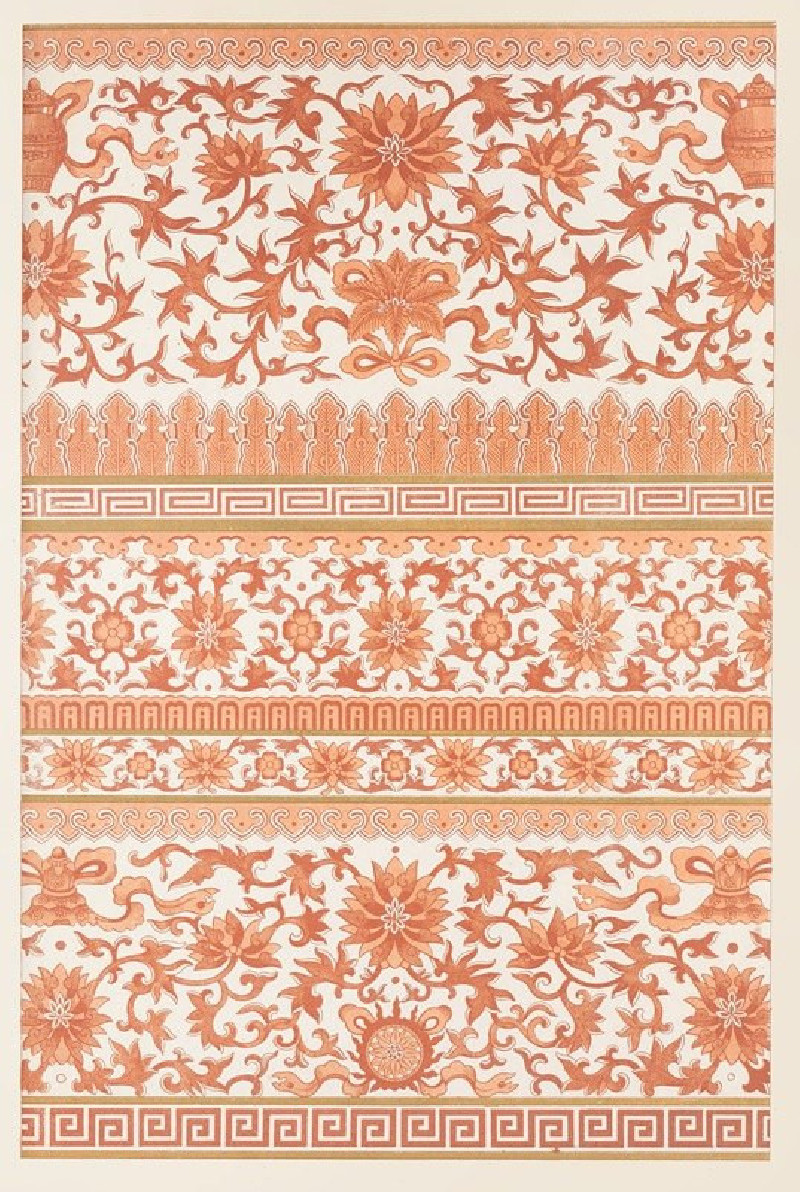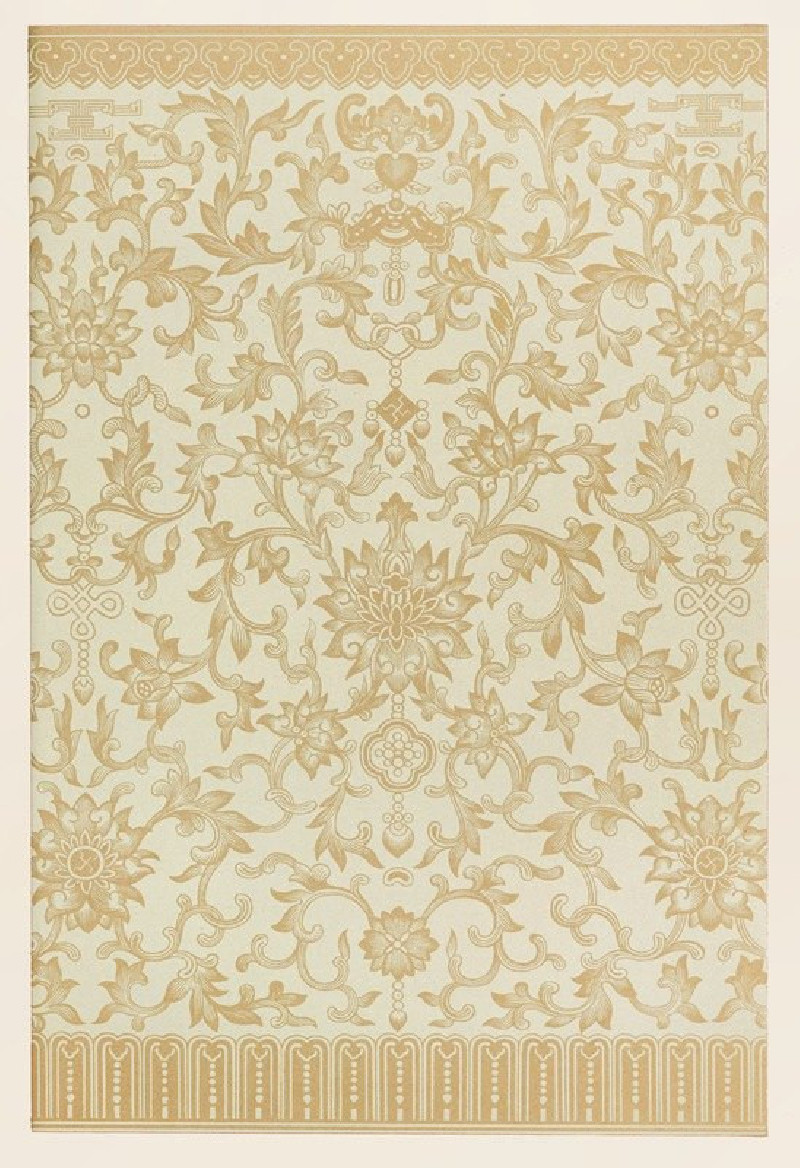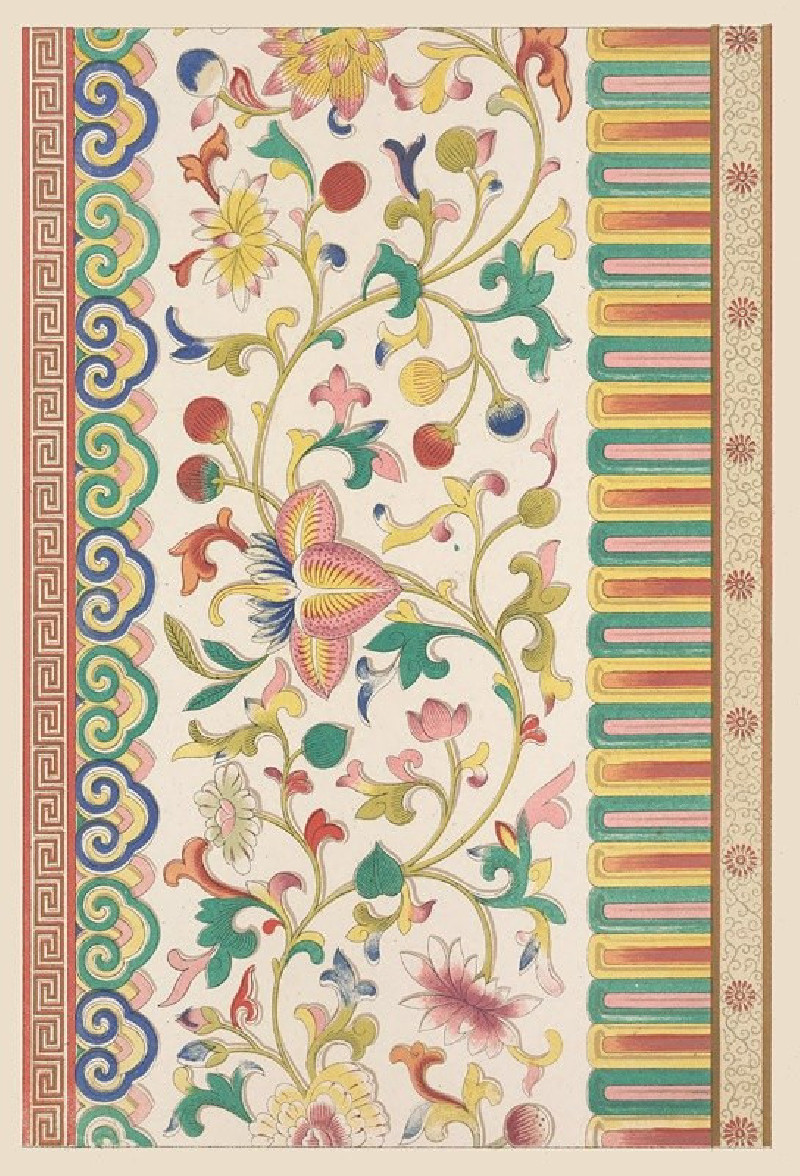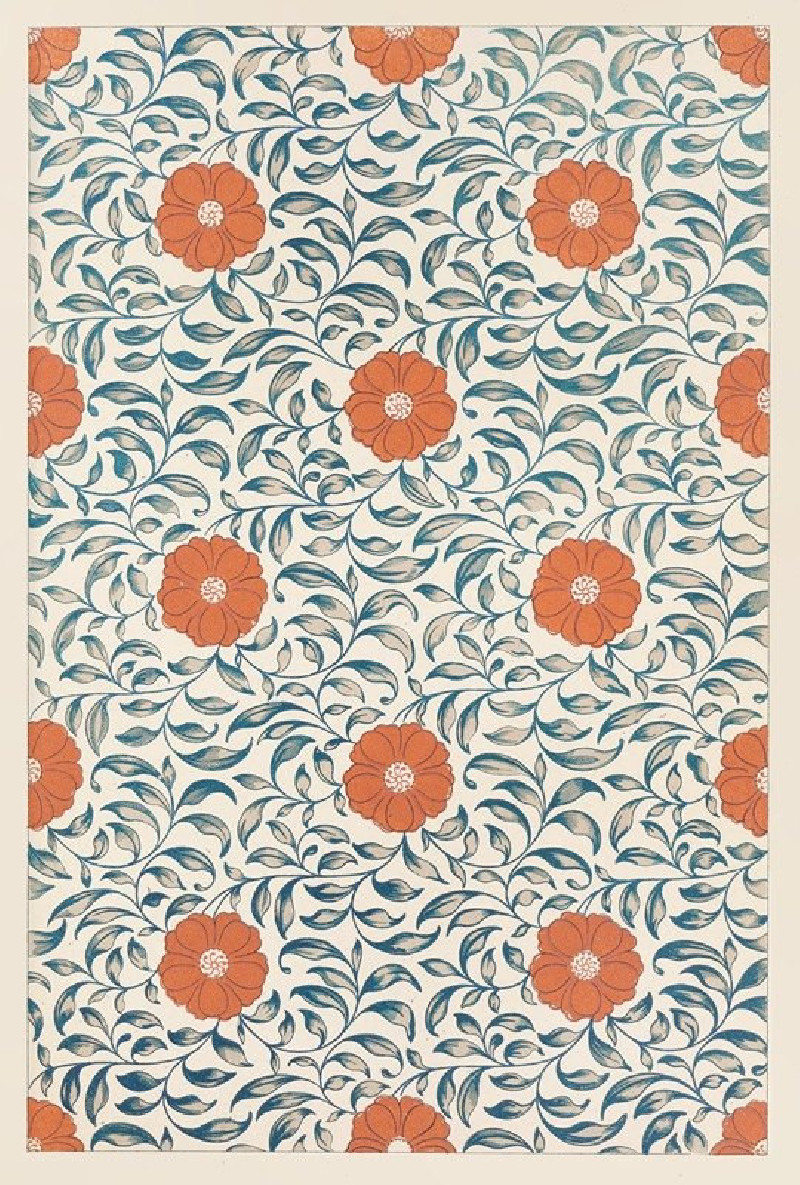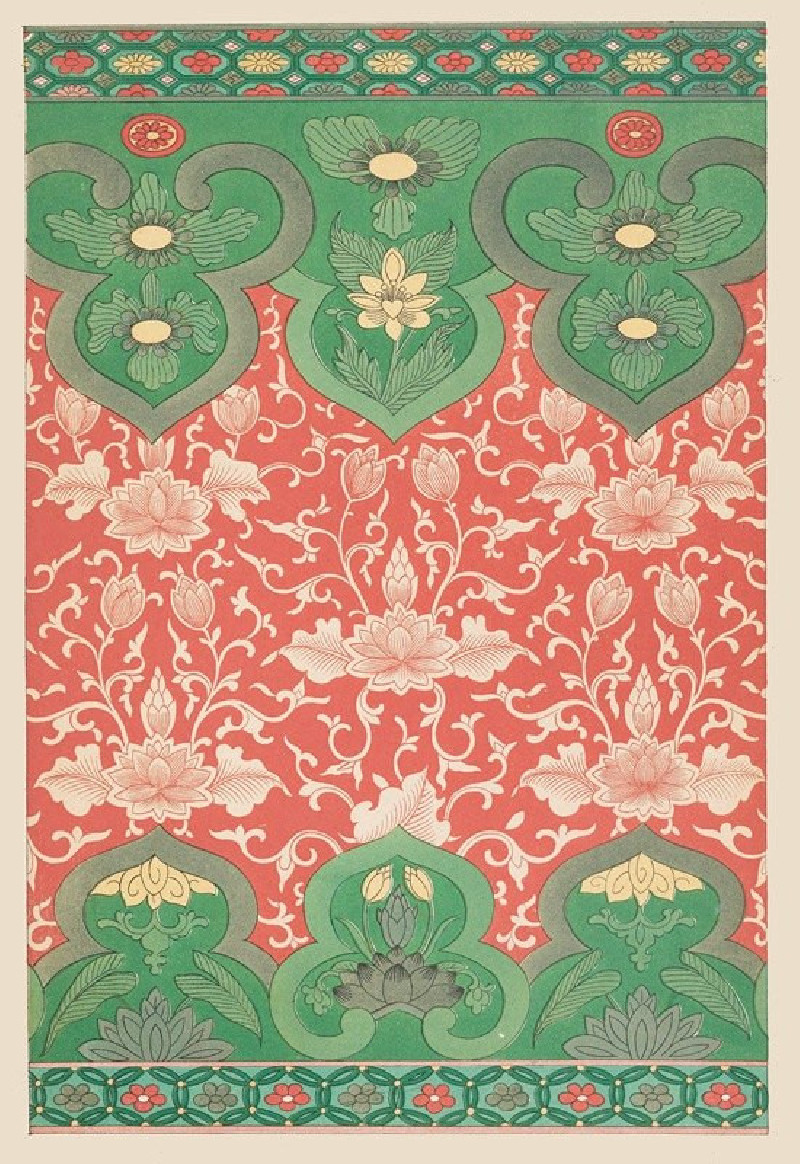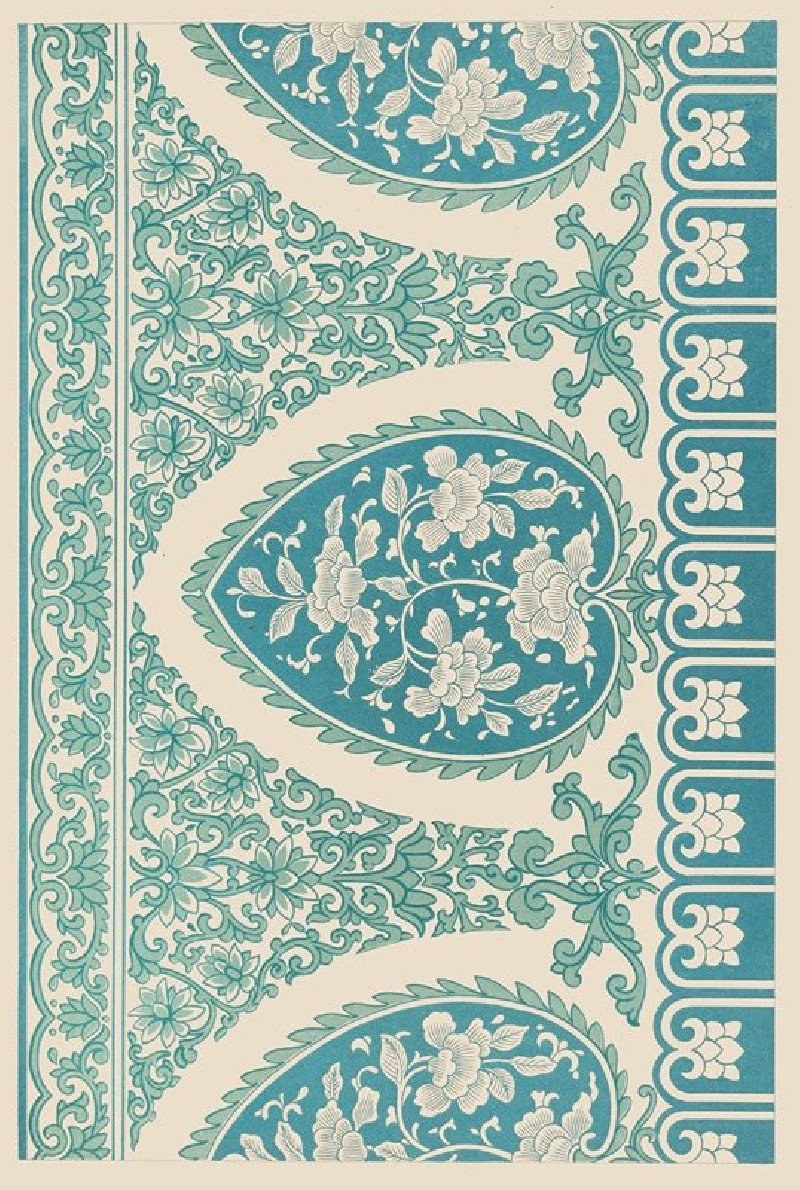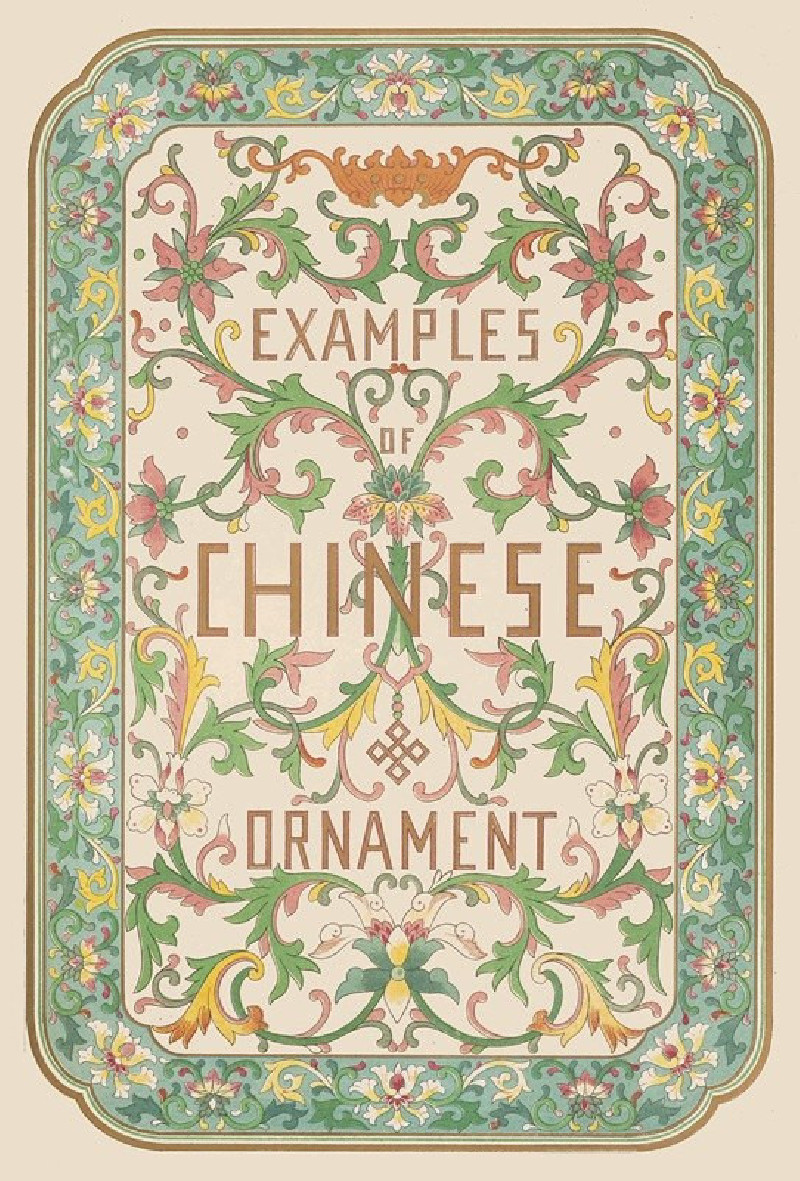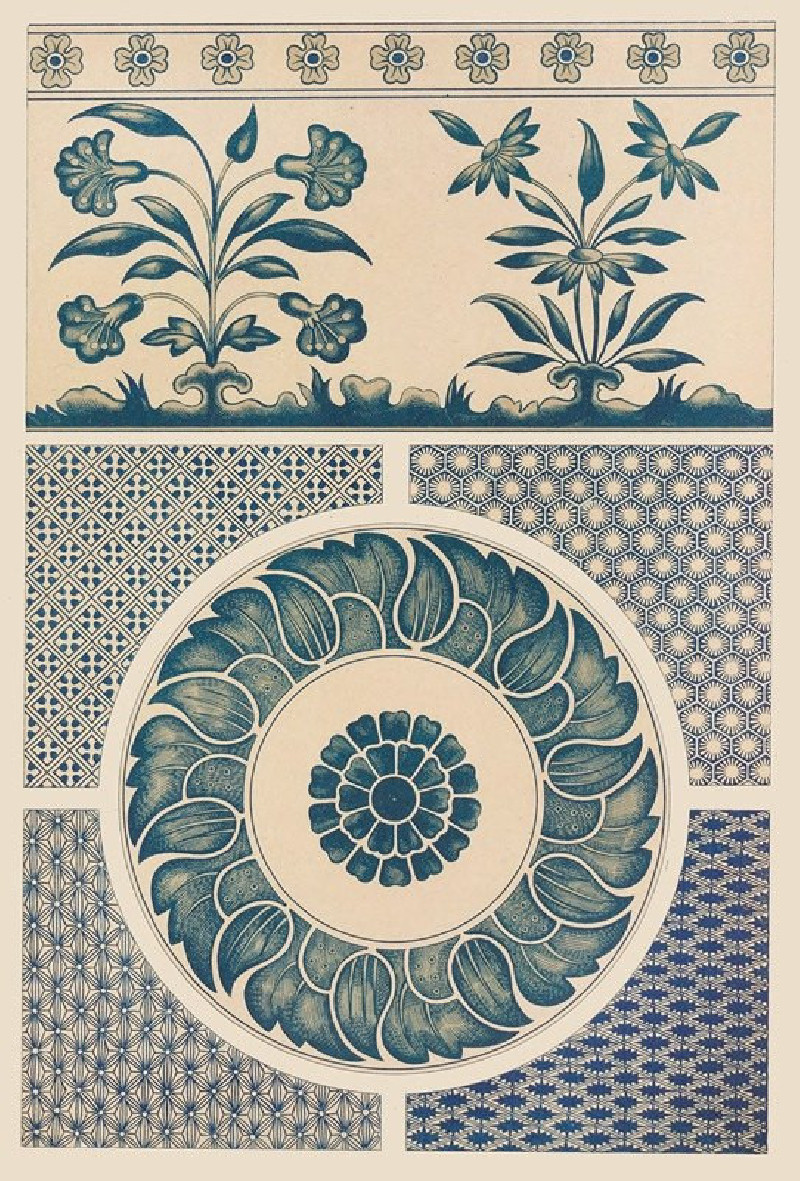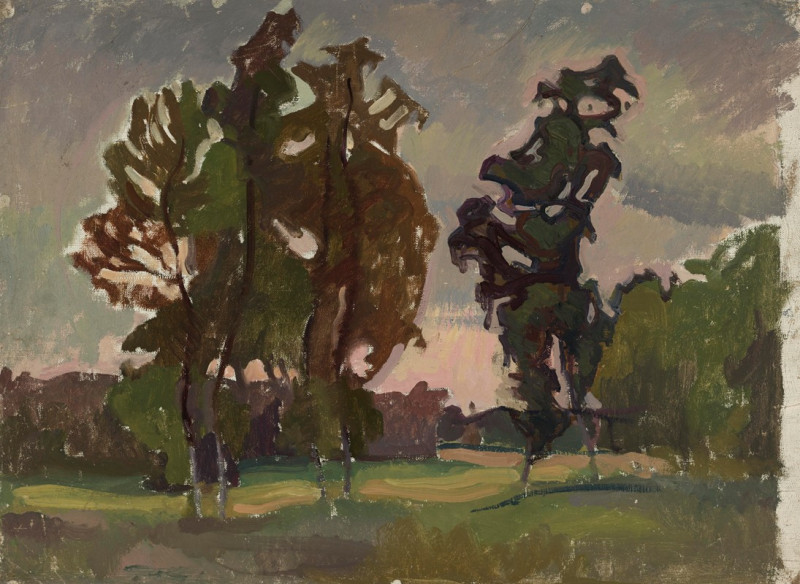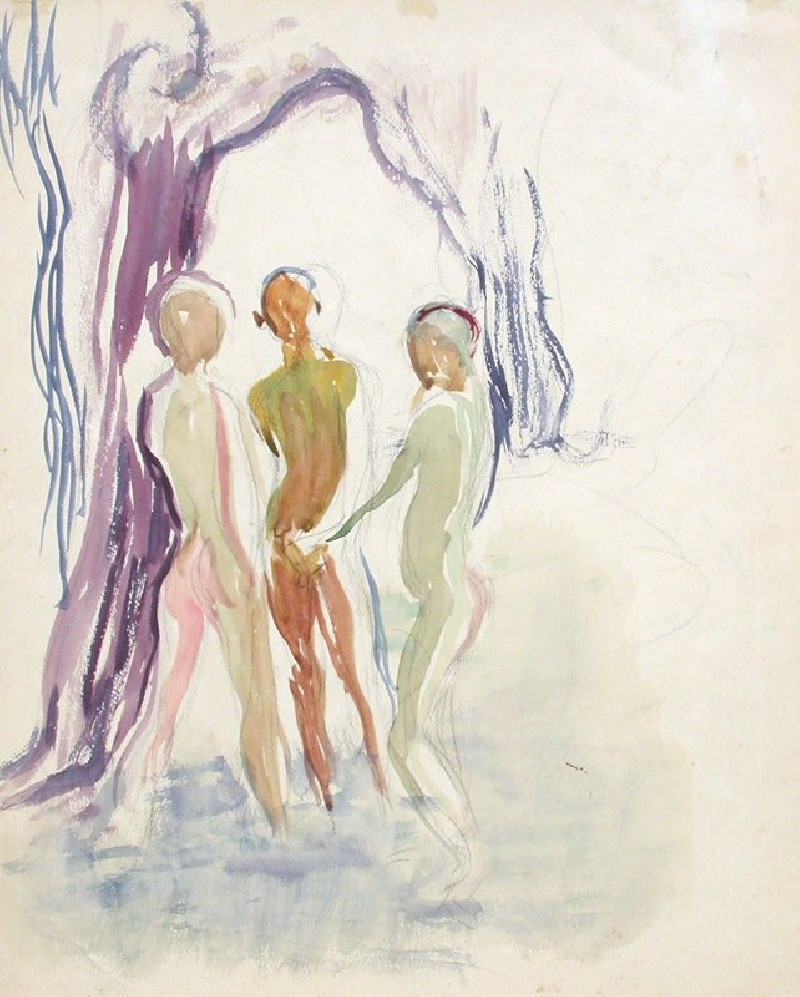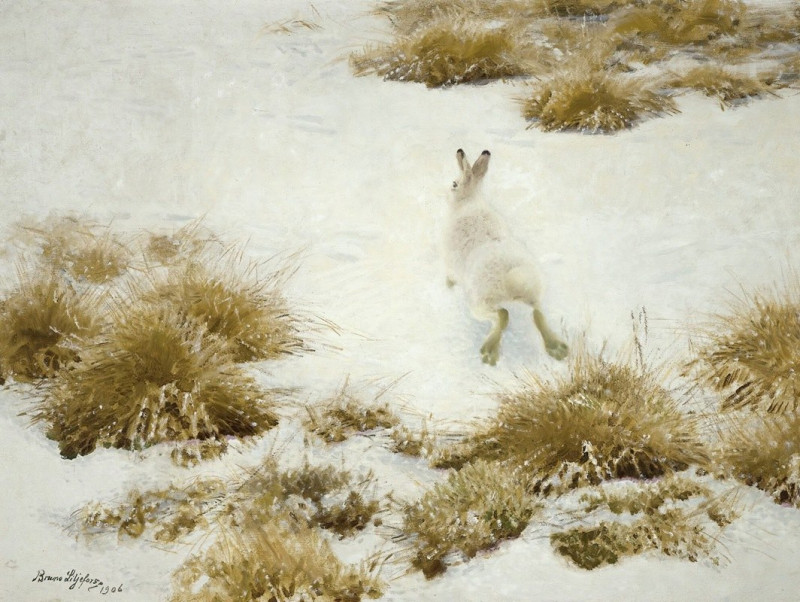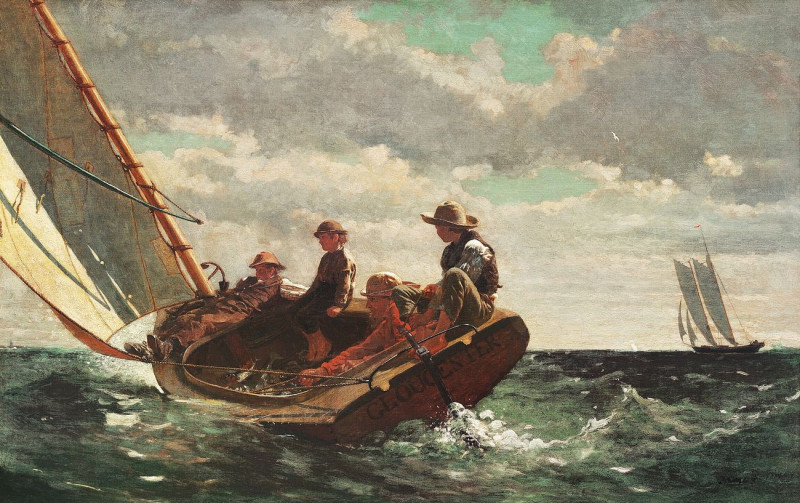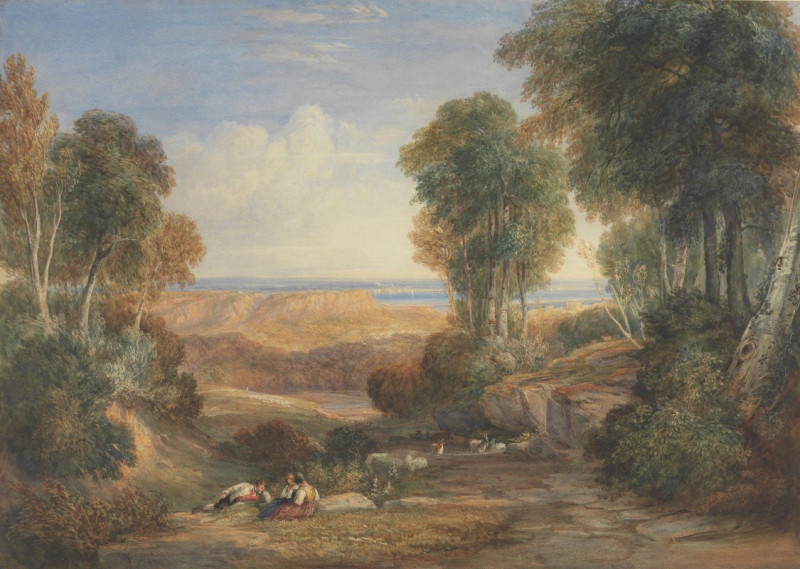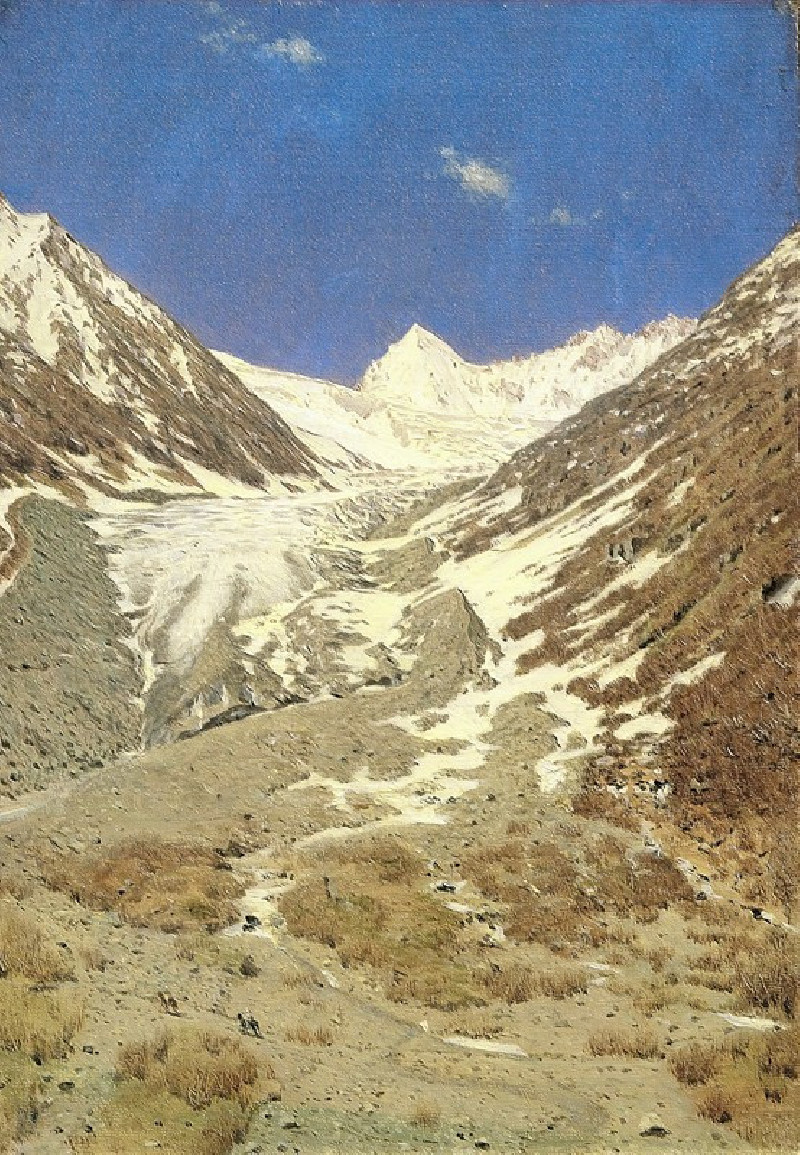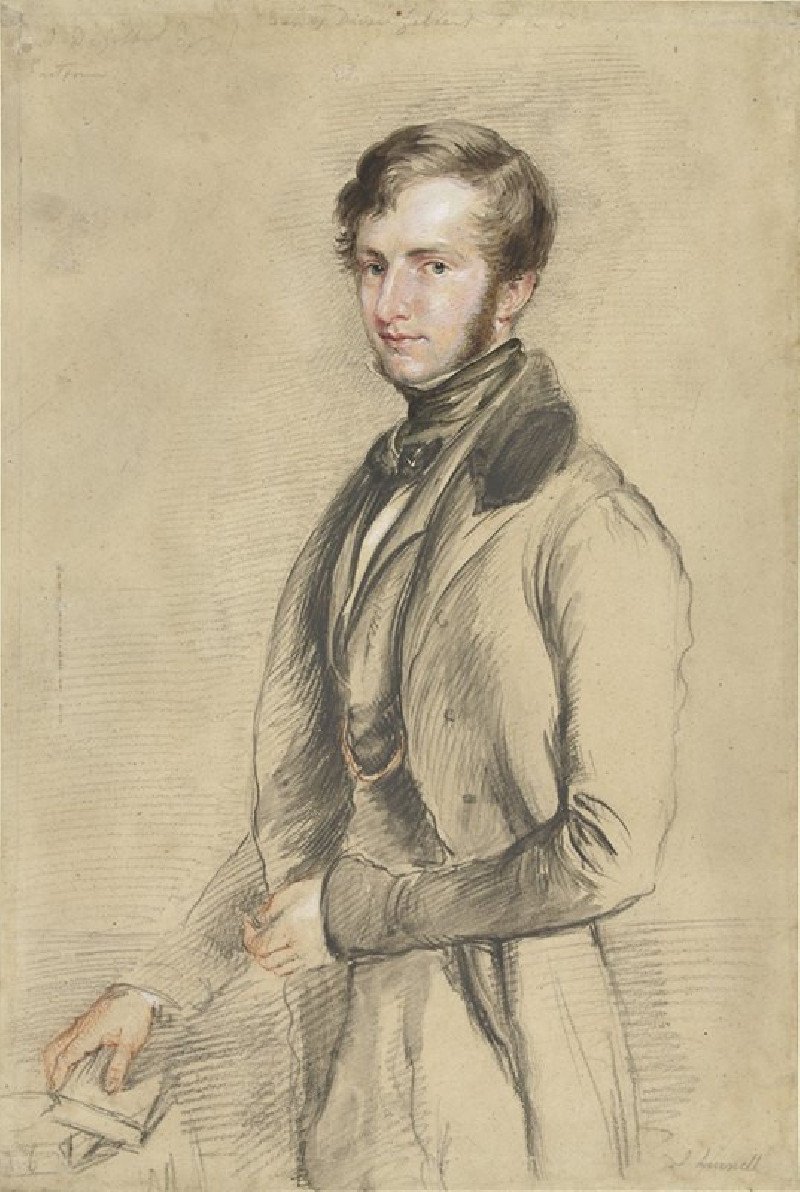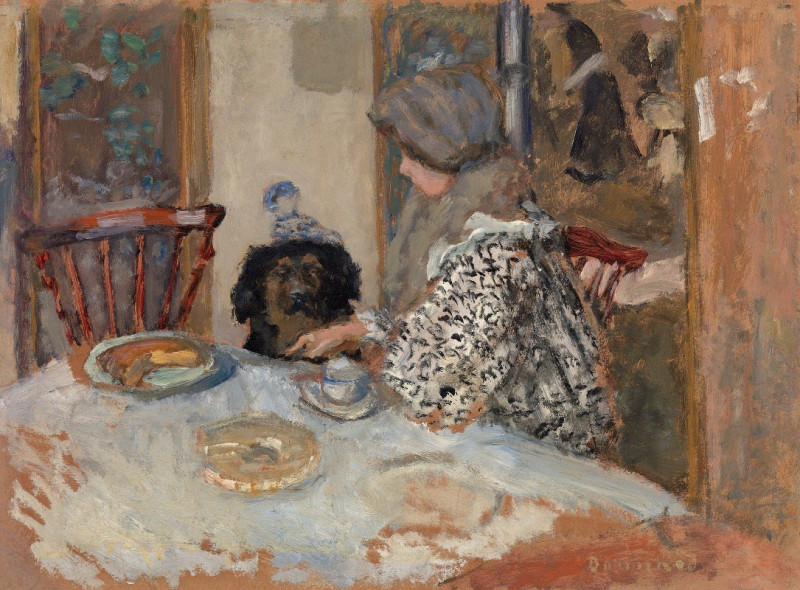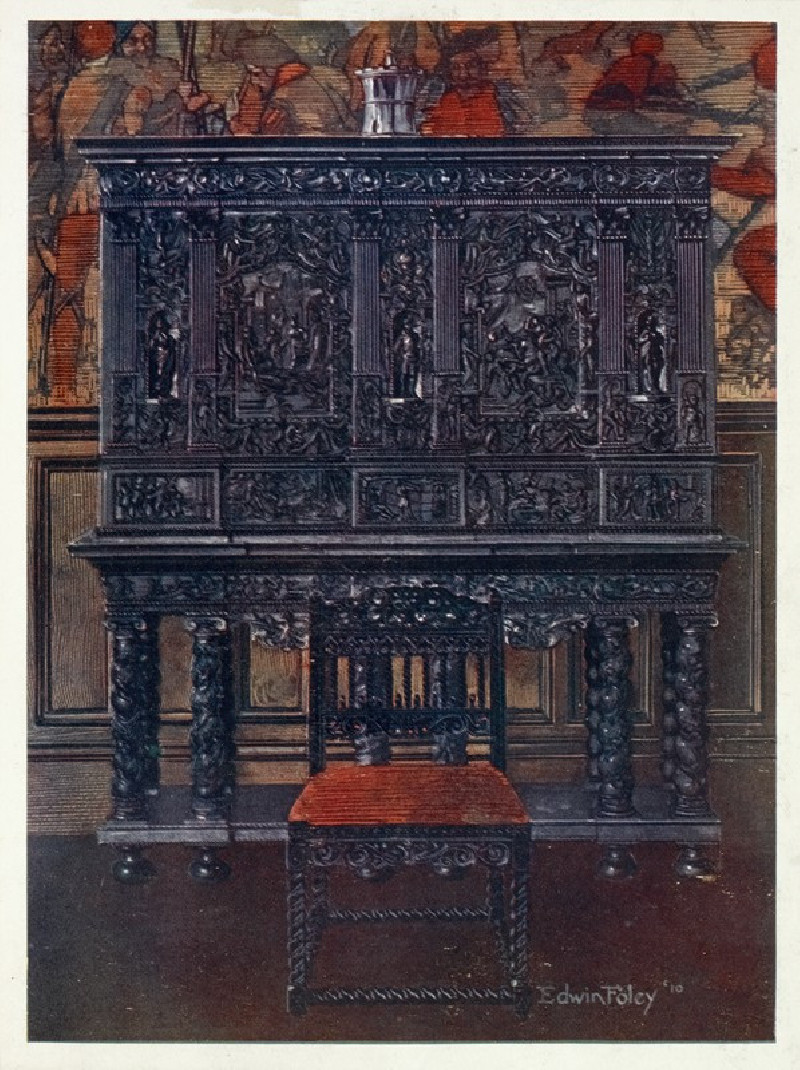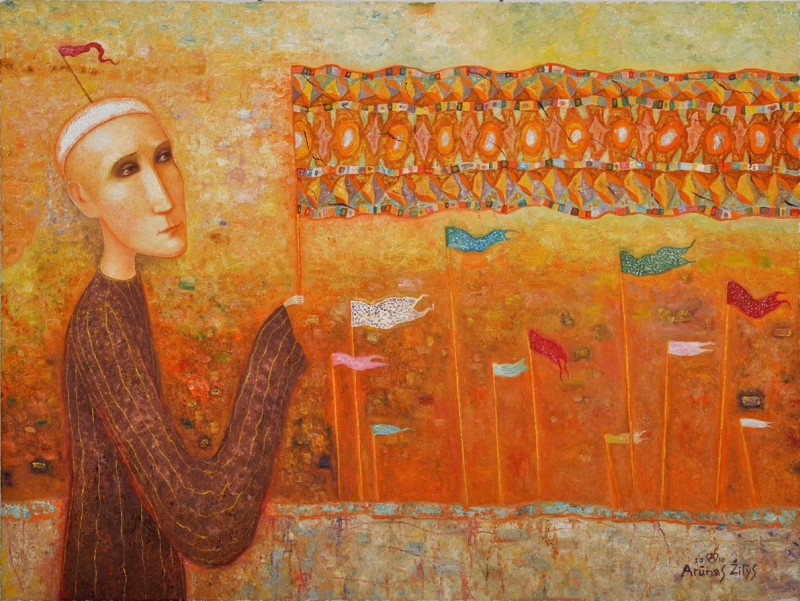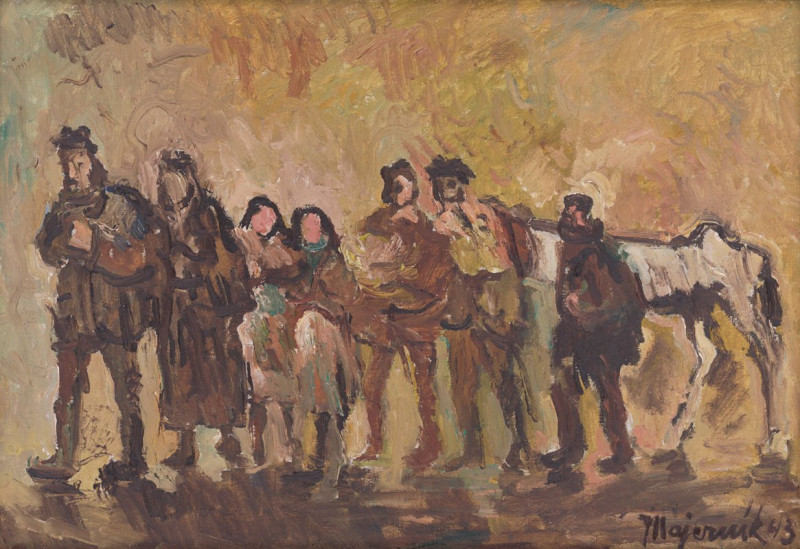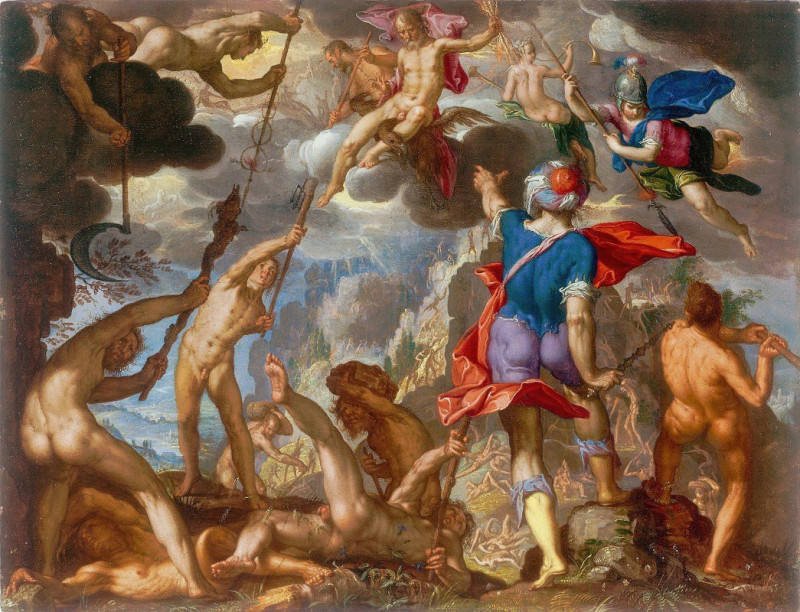Examples of Chinese ornament, Pl.80 (1867)
Technique: Giclée quality print
Recommended by our customers
More about this artwork
80'"Unveiling the richness of Asian artistic tradition, Owen Jones's 'Examples of Chinese Ornament, Pl.80' exemplifies the Victorian fascination with exotic motifs and styles. This vibrant work, crafted in 1867, features a series of decorative panels richly adorned with stylized floral elements, showcasing Jones's meticulous attention to the nuance and beauty of Chinese ornamentation.The left panel of the painting presents a lively display of sinuous vines and blossoms, intertwined gracefully. A standout feature is the elaborate depiction of a peacock, rendered with a stunning array of feathers, symbolizing dignity and beauty. This bird is a common motif in Chinese art, renowned for its decorative potential and auspicious significance.Adjacent to it, the right panel continues the theme of floral abundance. Here, large, symmetrically arranged flowers dominate, each petal and leaf meticulously highlighted to stand out against a bold, golden-yellow background. Such imagery not only reflects the aesthetic pleasures found in nature but also embodies cultural meanings, with flowers often symbolizing growth and renewal in Chinese tradition.The use of rich oranges and greens against a muted backdrop enhances the visual impact, making each design element pop with life and vibrancy. The detailed border framing the composition adds a finished, polished look, indicative of Jones's comprehensive approach to design and ornament.This artwork, while a testament to Jones's admiration and study of Chinese patterns, also serves as a bridge connecting Western audiences to the profound depth of Eastern design principles. It invites viewers to appreciate the intricate, interconnected nature of art, culture, and symbolism across different societies.
Delivery
Returns
Owen Jones was an English-born Welsh architect. A versatile architect and designer, he was also one of the most influential design theorists of the nineteenth century. He helped pioneer modern colour theory, and his theories on flat patterning and ornament still resonate with contemporary designers today.


